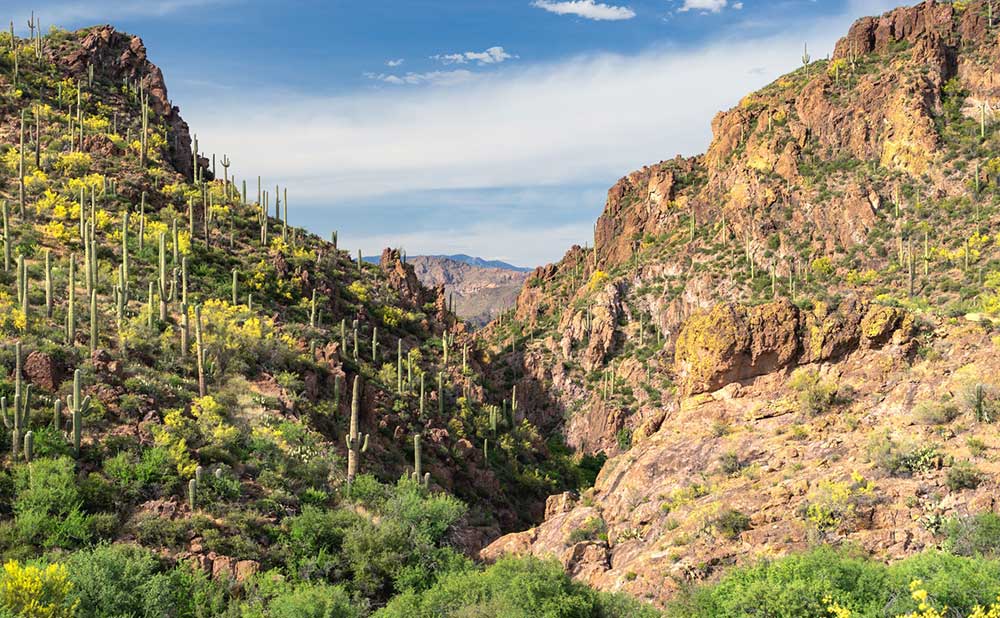My little dog Twig and I have walked several miles through this astonishing Sonoran Desert today. I find again that age does not enhance my ability to traipse around in the heat. Although not from a large or scientific sample, I have heard among those I’ve met over recent time who approach or exceed 70 years a similar commentary: Where in hell did the energy go? And the resilience and stamina and flexibility? We know where it went but somehow it never ceases to surprise us when we enter the landscape of decline. Twig is only 3-4 years old and ten pounds, but an intrepid hiker and I watch her with a modicum of envy as she moves crisply along, until her as yet untoughened pads pick up reminders that cholla will hitch a ride when given the chance.
This is such a remarkable place. Although the desert here usually receives only about 5” of rain annually, over the last two years it has been two to three times that. Desert flora appreciate the favor; I read in a local publication that Rangers found cacti bulging with retained water during this time, and there was even a bit of snow on the mountainsides and ephemeral cascades and falls as the moisture knew where to go without being told. I’ve spent a lot of time in forests and loved them; alongside even this abundant desert they would crush the competition, if such existed, and show the desert what real abundance, fed by sufficient rain, looks like. But that’s irrelevant. Abundance here is all the more remarkable since it has to work harder, seemingly, than forests to achieve its results. Relative to the conditions, desert accomplishes as much as forest, and maybe because it’s not so big and high and doesn’t leave so much debris lying about, it looks more diverse and each plant stands out more: cholla’s myriad species, organ pipe cactus, ocotillo, prickly pear cactus, mesquite, Palo Verde, grasses and shrubs. I have questions that await my books to answer; actually, to remind me of the answers since I once knew them but I’m sorry to say they appear to have accompanied stamina on its way downstream.
One question in particular: the usual rule of desert life stipulates spacing: don’t get too close to neighbors because the water’s too rare and sparse and it is better to share than compete. But here there is not only propinquity but often I see two or more plants of different species seeming to put roots virtually side-by-side and on top of each other. I remember that some of this happens when a seed drops in the shade of an older plant and, appreciating the cooler shadowed space, decides to stay put and grow there. Which makes sense but why does the source of that shadow put up with the interloper, who he knows will compete for water? Maybe he enjoys the companionship, but more likely there’s more going on than I can see. I seem to remember that one species, creosote I believe, has the habit of toxifying the ground around it when it gets big enough, thus punishing what may have been its early shade source.
I revel in the early morning desert scents, in the diverse plants and the diverse ways they arrange themselves, in the bird calls, and the night sky. Last night I watched a slivered early-phase moon pursued by two planets, Saturn and more closely, Jupiter, the brighter of the two; I watched for an hour as it headed for the horizon neither gaining nor losing ground. The three formed an arc. Tonight, I will see what they all came to as they continued sporting on the Earth’s other side.
Photo by Jim Witkowski on Unsplash


